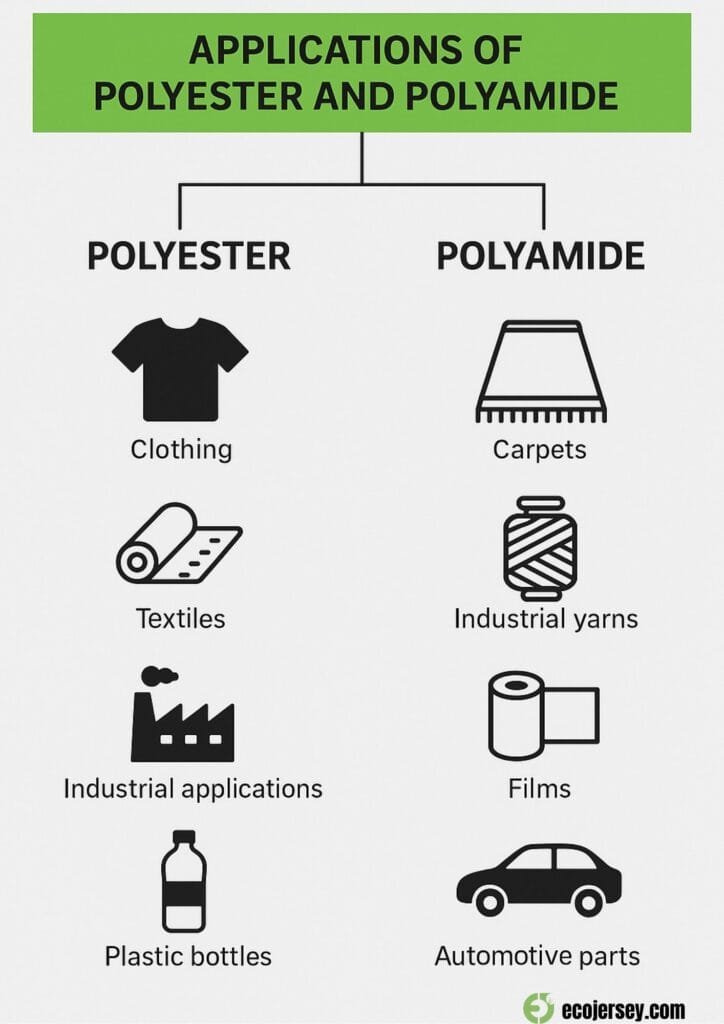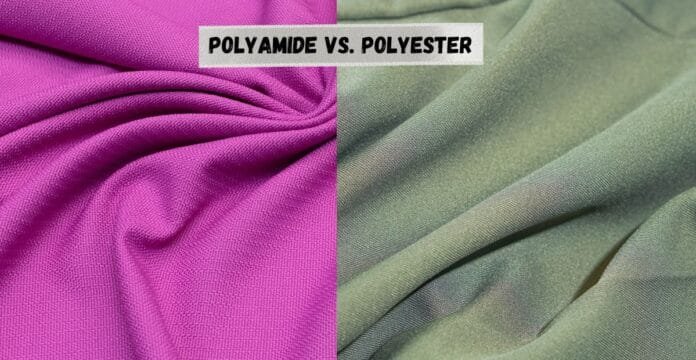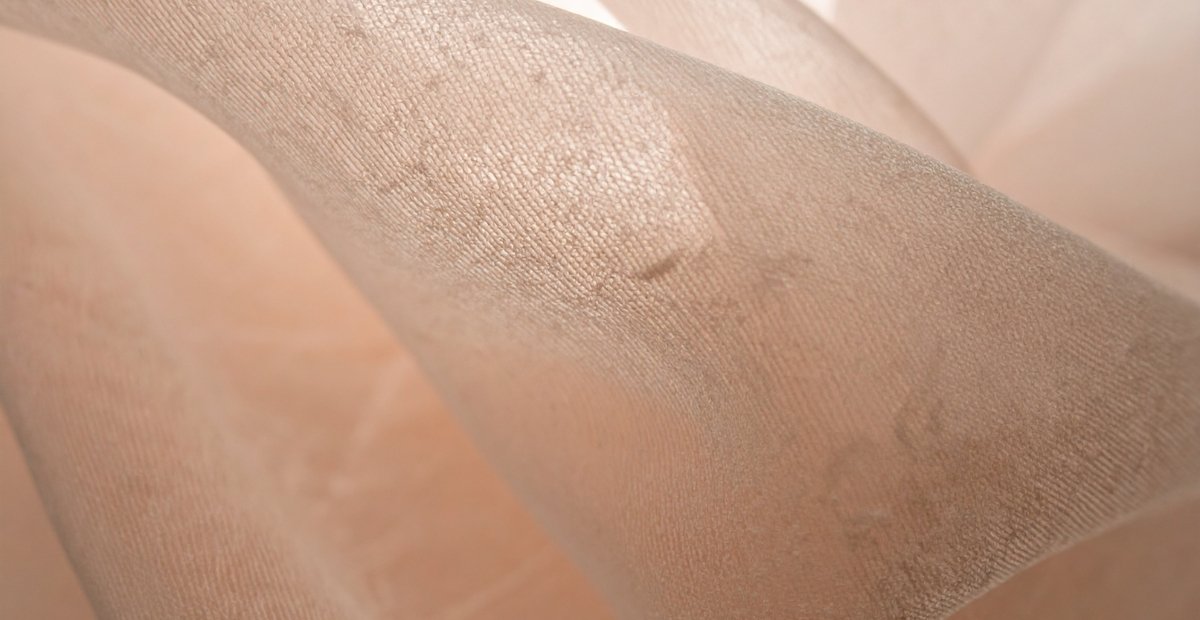Introduction-
People tend to ask a question when they begin to discuss synthetic fabrics: Is polyamide and polyester the same? The mix up is understandable as both are petroleum-based fibers that are commonly employed in fashion and textiles. Nevertheless, they are not the same. All of them possess their individual characteristics that affect the texture, comfort, durability, and performance. Knowing the difference enables the customers and the brands to select the right content in a circumstance. Although polyester is the leading material in the international market, polyamide (or most famously nylon) is available in activewear and luxury items. The two fabrics have their advantages and disadvantages and thus they can be applied in various aspects.
What is Polyamide?
Definition and History
Polyamide is a collection of artificial polymers comprising of repeating amide bonds. The most common one is the nylon, which was launched in the 1930s by DuPont. It became soon known as a replacement of silk in stockings, ropes, and military equipment. Polyamide is currently an important Sportswear, lingerie, and outdoor fabric due to its softness and strength. Polyamide is elastic and resistant unlike natural fibers. This ensures that it is perfect in rigorous applications that require flexibility and durability.
Properties of Polyamide
Durability- Withstands wear and tear thus it is long lasting.
Elasticity – Good stretch and recovery without deformation.
Water resistance- The fabric is less absorbent than natural fibers.
Softness – It gives a silky smooth feel on the skin.
Abrasion Resistance – is resistant to friction and rubbing.
Common Uses of Polyamide
Sportswear- Ideal in the stretch performance apparel.
Swimwear – Resists chlorine, sea water, and sunlight.
Hosiery –Substitutes silk stockings with more elastic ones.
Outdoor Gear – It is used in tents, ropes and backpacks.
Lingerie/soft and lightweight-intimate wears.

What is Polyester?
Definition and History
Polyester is an artificial fiber that is composed of polyethylene terephthalate (PET). It was initially brought in the 40s and became popular in the 70s due to its quality and carefree characteristics. Polyester is not susceptible to shrinking and wrinkling and is not very absorbent like polyamide. It has gradually over the years been the most popular fiber used in the textile industry. Polyester has been on the frontline of use since it is cost efficient and versatile in both clothing and furniture upholstery.
Properties of Polyester
Wrinkle Resistance – Holds are easy to wear without any ironing.
Quick-Drying – Repels Water and dries quicker than most fibers.
Lightweight- Can be worn without becoming heavy.
Color Retention- Does not fade after repeated washing.
Strength- Greater tensile strength of long-lasting performance.
Common Uses of Polyester
Fashion – Everyday dresses and low-cost clothes.
Home Textiles – Curb, bed linen and pillow and bed cover.
Furniture Upholstery– chairs, car and sofa seats.
Activewear Running-gear, tracksuits and gym wear.
Industrial Purposes- Belts, ropes, and safety gears.
Read About>> Can you dry clean polyester?
Key Differences Between Polyamide and Polyester

Origin
Both are artificial (fossil-based) fabrics produced out of divergent polymers. Amide-based monomers (e.g. hexamethylenediamine + adipic acid) are the source of polyamide fibers (as, e.g. nylon). Polyester fibers are a product of monomers consisting of esters (ethylene glycol + terephthalic acid). Hence though they are both plastics, they have different building blocks.
Touch and Sensation:
Polyamide fabrics are soft, silky and smooth to the skin. They are loose-fitting and fit easily with the body. Comparatively, polyester clothes are drier and stiffer. A polyamide garment (such as nylon stockings or lingerie) will be better than a plain polyester tee. Polyester however is firm and this implies that it does not change shape easily.
Strength and Durability:
Polyamide fibers are characterized by extremely high tensile strength and abrasion resistance. Their wear is heavy, and they do not stretch. Polyester is equally strong, but less resistant to friction, and more likely to pill. That is, polyester can exhibit fuzz balls after some time whereas polyamide will normally last longer than polyester during extreme manipulation.
Moisture & Breathability:
Polyamide retains minimal moisture (approximately 4 g. /m of mass), which enables it to carry the sweat off the skin. This renders polyamide breathable and colder to wear. Polyester, however, does not absorb much water. It has a tendency of holding the sweat on the surface rather than evaporating it. Polyamide-made garments therefore feel lighter and drier when on the body as opposed to polyester made clothes which are at times clammy unless they are specifically treated to wick moisture.
Heat, UV and Chemical Resistance:
Polyester is better in terms of heat and UV resistance. It is able to withstand increased temperatures of laundry and extended exposure to the sun without breaking down. Polyamide (nylon) is prone to melting or degrading at high temperatures and it is also likely to turn yellow with time in sunlight. The two fabrics are resistant to most of the household chemicals; however, polyester is usually thought to be more stable in harsh conditions.
| Feature | Polyamide (Nylon) | Polyester |
|---|---|---|
| Texture | Soft, silky, flexible | Crisp, smooth, less silky |
| Durability | Very durable but weaker under sunlight | Extremely durable, UV resistant |
| Moisture | Higher absorption, feels softer | Quick-drying, low absorption |
| Cost | More expensive due to production | Cheaper and widely available |
| Comfort | Stretchy, comfortable, good for skin | Breathable, lightweight, practical |
| Best For | Swimwear, lingerie, luxury activewear | Fashion, upholstery, general use |
Which is More Comfortable? Polyamide or Polyester?
Softness and Stretch
Polyamide fabrics can be touched easily as compared to polyester as they are quite soft. They are so silky and so comfortable to wear as they are against the bare skin. Polyamide is also more elastic hence it follows and stretches with you. Polyester, in its turn, is more firm-handed and less stretchable. Polyester shirts or pants can be somewhat rough unless they are mixed with cotton or elastane. Polyamide is preferable, then, so far as pure softness and body-hugging stretch is concerned.
Breathability and Moisture-Wicking
Polyamide is a winner in breathability. It draws in some moisture and evaporates some hence it will be cold when active. Polyamide garments are now highly comfortable on sweaty workouts. Polyester does not permit water to enter it therefore it can make the person feel cool when he or she is sweating. This is overcome by many polyester athletic shirts with special wicking treatments. By nature though, polyamide will tend to be more comfortable on the skin, whereas polyester will be drier to the touch (however, it traps heat as well).
Skin Sensitivity
When well finished, both materials are mostly skin safe. Polyamide is smooth and therefore does not tend to create friction problems. there are no problems with its use in underwear and socks. Polyester may at times be itchy to sensitive human beings more so when the fabric used is of low quality or knitted roughly. Both of these materials are not known to be hypoallergenic in the strong sense of the word, but they both tend to produce more reactions than any synthetic. Other delicate types like natural blends are favored, however, when it comes to comfort, polyamide (nylon) is usually seen as gentler to the sensitive skin courtesy of its smooth feeling.
Durability and Longevity
Lifespan
Polyamide is also a long lasting fabric, however, polyester exhibits different failure modes. High strength of polyamide fabrics will result into heavy wear and numerous wash cycles. Polyester materials are less vulnerable to environmental destruction (sunlight, heat) thus they do not fade easily and the color remains. As a matter of fact, a polyester shirt can appear newer longer, but a nylon jacket can be more durable to rough treatment. Polyamide fabrics that are of high quality can serve over the years, and the same applies to polyester garments, durability is simply presented in other forms.
Pilling and Fading
Polyester tends to pill (little fuzzy balls) particularly in places of friction such as underarms or cuffs. Polyamide pills much less. Conversely, polyester has a plus on the color retention it does not fade away when exposed to the sun. In strong sunlight, polyamide will fade or lose some of its strength slightly. Polyester is also likely to retain its shape (it does not stretch much) with frequent washing and drying and polyamide may lose some of its elasticity gradually over time when not well maintained.
Stretch and Shape Retention
Polyamide is highly elastic and therefore it can stretch or drop when held in an elongated state. Polyester is less elastic and therefore a polyester cloth will not be able to give and will not be able to bounce back easily. It is their implication that polyamide is ideal when it comes to stretch garments (such as swimwear) but polyester can be used when you want a garment not to stretch and keep its original shape (such as a coverlet). Polyester has an advantage in shape retention and UV resistance, which is considered the longevity of the product, whereas polyamide has an advantage in abrasion resistance which is considered the longevity in real hard usage.
Environmental Impact: Polyamide vs Polyester
Sustainability Issues
The two fibers are similar in that they are manufactured using petrochemicals hence have using a similar impact on the environment. Nylon or polyester production involves the use of non-renewable resources and energy. Both of them are not biodegradable, and therefore, old garments can spend decades in landfills. In the past, their manufacturing has led to pollution and green house gases.
Recycling & Alternatives
Over the last few years recycling has been on the rise. PET can be recycled extensively into bottles in the form of textile fiber. There are numerous corporations that provide the so called recycles polyester clothes. Polyamide can be recycled but it is not widely done; there are fishing net nylon recycled brands and carpet waste nylon recycled brands. Both of the fabrics contain bio-based advances: such as PLA polyester, made of corn, and bio-nylon, made of castor oil. These lessen the reliance on oil and are yet to be developed.
Biodegradability
both nylon and PET do not decompose easily in nature. Nonetheless, there are new polyamides (such as polylastic acid nylons) and biodegradable polyesters. Overall, polyester will be tougher than polyamide in the environment (regarding many years), and the structure of polyamide can occasionally disintegrate a bit under UV (however, not by a great deal). They are both practically non-biodegradable.
Cost Comparison: Which is More Expensive?
Overall, polyamide (nylon) is the more expensive one. The raw materials of polyester, and its production processes are easier and enjoy enormous economies of scale. According to industry statistics, polyester fabrics tend to be half to a quarter the price of similar polyamide fabrics. To illustrate, an item such as a polyester fabric may only cost around 0.60-1.20/yards whereas a nylon version can cost 1.20-2.50/yards. The more expensive price of nylon represents its complicated polymer chemistry and the extra performance (strength and elasticity) it offers. That is why the polyamide garments are frequently more expensive in the high-performance brands. In the meantime, low end brands of the mass-market usually use polyester to maintain low prices.
Care and Maintenance
- Washing -Both fabrics like cold over warm washing.
- Drying Polyester dries quicker; polyamide requires milder drying.
- Heat Sensitivity Polyamide is soft to heat, polyester tolerates medium-temperature.
- Ironing Polyester needs less ironing; polyamide is to be ironed very cautiously.
- Ease of Care – Polyester is easier to maintain overall.
Polyamide vs Polyester in Sportswear
Sweat-Wicking Properties:
Polyamide fabrics are known to wipe the skin off sweat and keep the athletes dry. This renders nylon blends to be the best in high-sweat activities. Polyester has a tendency to retain water on its surface and hence it becomes more wet when one sweats. Contemporary performance polyesters are however treated to wick better. To be brief, a polyamide shirt or legging will tend to be drier as compared to a 100 percent polyester one during strenuous exercising.
Breathability:
Polyamide has a small water uptake that allows the air to pass through and thus it is more breathable. The water repellency of polyester implies less water uptake hence less breathability. Pro-athletes usually believe that long runs or yoga would be more comfortable in nylon-based (polyamide) clothes due to the ability of the latter to transfer the sweat. Polyester mesh jerseys on the other hand are light and durable and may get hot unless they are ventilated.
Athletes and Brands:
There are lots of sport brands which use both fibers. Cycling shorts or swim suits are examples of items that can contain nylon (polyamide), to make them comfortable and stretchy. Running apparel may utilize polyester fabric mixtures in order to retain color and be durable. Nylon is often relied upon to make jackets by outdoor athletes (hikers, skiers), however fleece sweaters, as well as running tees, are typically polyester. Costly sportswear companies tend to position their so-called nylon collections as high-end but team uniforms and gym apparel commonly make use of polyester.
Conclusion-
So, is polyamide the same as polyester? The answer is no. Although they are both synthetic fabrics, the differences in their texture, comfort, durability, and cost make them different. Polyamide is better than polyester in softness, stretch applications and luxury applications whereas polyester is superior in affordability, durability and large scale applications. The two fabrics have different usages in the field of fashion, active wear, and textile. The decision between them is based on individual needs, way of life and money. Knowledge of these differences informs buyers to make wise long term decisions.
Read More>> About types of Polyester fabric.
FAQs
So, is polyamide the same as polyester?
No – they are different fibers connected. Polyamide (nylon) and polyester are synthetic, but differ in terms of their chemistry. All of them possess distinctive characteristics (e.g. polyamide is more stretchable, polyester is more heat-resistant).
Which is stronger: polyamide or polyester?
Polyamide is by nature tougher. Nylon fibers are very strong in tensile strength and tear resistant. Polyester is also powerful, however polyamide is stronger than it in shear.
Does polyamide breathe better than polyester?
Yes. Polyamide takes in a minor part of moisture and pull it off, hence it is more breathable. Polyester keeps the water out and is perceived to be less breathable.
Is polyamide more expensive than polyester?
Yes. Polyamide (nylon) is more expensive as it is produced more difficult. Bulk prices reflect nylon fabrics that tend to be 3050% higher than polyester counterparts.
Is polyamide safe for skin?
Generally, yes. Polyamide (nylon) finds lots of application in clothing against bare skin such as tights and underwear. Both are inert fabrics but like any other material there are those who choose natural fabrics in the event that they have very sensitive skin.



